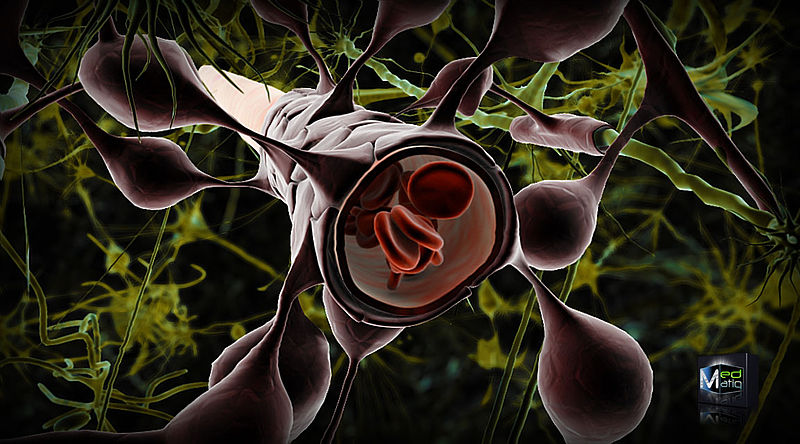Tiny bubbles may help life-saving drugs cross the barrier that separates the bloodstream from the brain

The blood-brain barrier, a dense layer of tightly packed cells that line blood vessels in the brain like regiments of soldiers, has always been the bane of neuromedicine. Although this line of defense protects the brain from many chemicals that can harm it. But it also leaves out most of the drugs. Scientists have spent decades of research looking for ways to breach the barrier long enough to allow drugs against Alzheimer's, Parkinson's or cancer to slip in. Now, researchers say they may have finally figured something out.
The new method uses micro-bubbles - tiny bubbles containing a simple gas surrounded by a rigid fatty layer. Scientists at Harvard University, the Massachusetts Institute of Technology (MIT), Columbia University, and other institutes are developing methods to inject the bubbles into the bloodstream and guide them with ultrasound toward the blood-brain barrier. The bubbles break through the barrier at certain sites determined by the ultrasound beam. Once the barrier is breached, scientists inject the patient with magnetic nanoparticles coated with the drug and use a magnetic resonance imaging (MRI) machine to guide the particles to the exact point where they are needed. So far, studies in rodents have shown up to a 20% increase in the amount of cancer or Alzheimer's drugs reaching the brain when microbubbles and ultrasound are used.
The microscopic bubbles are just the latest and most promising innovation in a series of attempts to solve the problem of the blood-brain barrier. These attempts include inserting a catheter into the capillaries of the brain and developing a whole series of drugs that can "convince" the brain to let them pass. "Bubbles are less invasive and more economical than other methods," says Nathan McDonald, a radiologist and researcher at Brigham and Women's Hospital in Boston.
But the scientists still have to solve some problems. The main obstacle is how to increase the intensity of the ultrasound to a level that will be effective in humans without damaging the tissues. MacDonald believes that researchers are making rapid progress on all fronts. "It's not ready and ready for human use yet," he says. "But we'll get there quickly."

3 תגובות
This is just a presentation of research, so there is nothing to complain about lack of details
Nonsense in carrot juice.
This treatment will kill people if they try it.
Insertion of microbubbles into the cerebral capillaries causes vasoconstriction in them and can also cause obstruction by trapping the bubbles.
Ultrasound and bubbles will cause cavitation that can cause irreversible damage due to high shear flows, or damage to the blood-brain barrier that will not be repaired soon and will allow the penetration of much more problematic substances into the brain, for example such as the immune system of the rest of the body (bad idea)
and then?
Does the barrier restore itself? Or that after such treatment, certain areas remain "broken"?